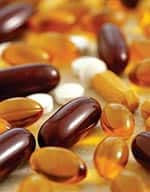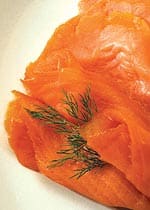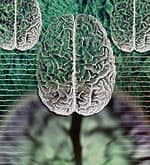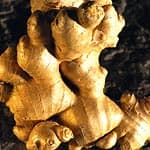Life Extension Magazine®
Recent advances in understanding the origins of attention deficit hyperactivity disorder (ADHD) may allow symptoms to be managed with nutritional therapy and without the adverse side effects of commonly prescribed stimulant drugs such as Ritalin®. Essential fatty acids, B vitamins, choline, phosphatidylserine, amino acids, zinc, and herbal extracts all show promise in managing symptoms of ADHD. Understanding ADHDIn the past, children’s discipline problems, poor grades, and roughhousing with playmates might be dismissed as “rambunctious behavior.” The growing trend today, however, is to label increasing numbers of children—and even adults—with the psychiatric diagnosis of attention deficit hyperactivity disorder, or ADHD. At least 3-10% of children and 1-6% of adults in the US have been diagnosed with ADHD.1-4 Boys diagnosed with ADHD outnumber girls by a ratio of three to one. Symptoms of ADHD include an inability to concentrate or complete tasks, hyperactivity, compulsive or impulsive behavior, temper flares and mood swings, problems with short-term memory and learning, clumsiness, and distorted perception of time.3,5 ADHD affects school performance,6 social adjustment, and the likelihood of cigarette smoking and substance abuse.2 In a follow-up study of 55 young adults at the age of 22 who were diagnosed with ADHD at the age of seven, 58% had poor outcomes, including antisocial personality, alcohol abuse, criminal record, reading disorders, and low educational level.7 “Childhood ADHD . . . appears to be a most important predictor of poor psychosocial functioning in early adulthood,” the investigators concluded. “It would seem appropriate to screen for such disorders in schools and clinics so that therapies may be started early.”7 Although conventional pharmacological treatment of ADHD with stimulant drugs reduces symptoms of inattentiveness and hyperactivity, the most commonly prescribed, amphetamine-like drugs such as Ritalin® (methylphenidate) have the potential for addiction, growth suppression,2 and other serious complications.8,9 In a study of more than 200,000 preschoolers in three different health care settings, about 12% were prescribed stimulant drugs, and 90% of these prescriptions were for Ritalin®. Even more frightening, from 1991 to 1995, the use of Ritalin® tripled in 2- through 4-year-olds,10 and by 1997, 2 million US children were being treated with stimulants.2
Nutrients Show PromiseFortunately, recent advances in understanding the biochemical and neurophysiological roots of ADHD may allow these symptoms to be managed with nutritional therapy, without the adverse side effects of stimulants. Particularly promising are essential fatty acids, B vitamins, choline, phosphatidylserine, amino acids, acetyl-L-carnitine, zinc, and herbal nutrients that improve brain circulation. Because of the numerous and potentially adverse consequences of ADHD if left untreated, nutritional supplementation should be started as soon as possible. In a recent study, 20 children diagnosed with ADHD were treated with either Ritalin® or food supplements containing a mix of vitamins, minerals, phytonutrients, amino acids, essential fatty acids, phospholipids, and probiotics targeting biochemical risk factors for ADHD.11 Following treatment, both groups of children recorded similar and significant improvements on psychological tests. The results offer support for the effectiveness of food supplements in improving attention and self-control in children with ADHD, and suggest that food supplements may be as effective as Ritalin® in treating ADHD.11 “I have worked with ADHD for over 30 years, which has allowed me exposure to a range of treatments,” study coauthor Richard Judah, PhD, told Life Extension. “For many years, I was skeptical about nutritional supplementation as an effective way of addressing problems of inattention, distractibility, and motor-impulse control.” Dr. Judah, a psychologist at Vermont College in Brattleboro, adds, however, “I have come to the conclusion that the natural approach can indeed be effective in reducing the symptoms of ADHD. The biggest challenge in providing support for good supplementation to alleviate the condition involves establishing good research protocols to prove and quantify that it works.” Disconnects in the Neural NetworkTo be able to detect, discriminate, and respond appropriately to the barrage of sensory information encountered in everyday life, the neural network underlying attention must be intact and functioning properly. Just as severing phone lines and computer cables can significantly affect communication capability, disrupting nerve connections can affect communication in the human brain. Sophisticated brain-imaging techniques, such as magnetic resonance imaging (MRI) and functional imaging, reveal abnormalities in ADHD patients.12 These abnormalities involve both the gray matter and white matter of the brain. In the gray matter, tests show that blood flow and energy use are decreased in much the same areas that show anatomical abnormalities—namely, the prefrontal cortex and striatum.3,12 Structural deficits of the white matter are also apparent and may represent breakdown of the protective myelin coating of nerve fibers, which could decrease communication speed.12 These studies also show impaired regulation of neurotransmitters used by nerve cells to communicate with each other, including the catecholamine system, which is crucial to maintaining attention.3 Other studies of children with ADHD support the hypothesis that impaired catecholamine regulation is involved in the development of ADHD.13 This “fight-or-flight” system, which also involves the adrenal gland and its hormones, allows an individual to respond to stress via activation of the sympathetic nervous system, and to fight off or retreat from an attacker or other threat. Impaired catecholamine regulation of brain areas involved in ADHD may reduce the energy available to brain cells.14 Other research highlights deficiencies in dopamine neurotransmitter systems, which regulate movement and mood, in patients with ADHD.4,8 The inherited basis for ADHD may involve a gene coding for the dopamine D4 receptor,15 or a gene controlling receptors for serotonin, another neurotransmitter.16 Some studies suggest that abnormal genes may interact with environmental culprits to trigger or aggravate ADHD in susceptible individuals. Among these potential triggers: food additives; food intolerances; sensitivities to chemicals, molds, and fungi; heavy metals such as lead; pollutants such as polychlorinated biphenyls (PCBs); and nutritional deficiencies.1,8 “Nutrient deficiencies are common in ADHD; supplementation with minerals, the B vitamins (added in singly), omega-3 and omega-6 essential fatty acids, flavonoids, and the essential phospholipid phosphatidylserine can ameliorate ADHD symptoms,” notes Parris M. Kidd, PhD, in a recent review of the scientific literature on ADHD.8 In correspondence with Life Extension, Dr. Kidd notes, “Many if not all of the drugs used to treat ADHD have poor benefit-risk profiles. An integrated approach using diet, nutritional supplements, and detoxification is consistently effective in benefiting individuals with ADHD. Children are far better served by using nutrients first and turning to pharmaceuticals only as a last resort.” Limitations of Drug TreatmentRitalin® and other stimulant drugs that increase dopaminergic activity may improve ADHD symptoms—particularly inattentiveness, hyperactivity, mood swings, and impulsive behavior—in about 60% of patients.2,4 Paradoxically, however, these drugs are unlikely to improve school performance.6 Combining psychosocial interventions with medications may improve response to treatment.3,4,6,17,18 About one third of children with ADHD either do not respond to stimulant drugs or cannot tolerate their side effects.2,19,20 “Psychiatric medication has major risks in children,” cautions Dr. Josep Berdonces of the University of Barcelona in Spain.9 Science journalist Brian Vastag warns that “Ritalin® acts much like cocaine.”21 In individuals who later develop bipolar disorder, taking stimulant drugs in childhood may cause an earlier onset of the disease.22 Other drugs thought to be effective in some ADHD patients include those affecting the neurotransmitters noradrenaline, dopamine, or acetylcholine; bupropion; tomoxetine;23 atomoxetine;24 theophylline;20 and gabapentin.25 While better tolerated than Ritalin®, these drugs may also be limited by side effects.
Nutritional Therapy for ADHDAlternative therapies for ADHD include nutritional supplementation, dietary management, exercise and neurofeedback strategies, laser acupuncture, massage, and vestibular stimulation.2,26-28 Some scientists have noted that ADHD is very common among individuals with generalized resistance to thyroid hormone,8 and others have noted that thyroid treatment improves ADHD in individuals with documented thyroid abnormality.26 A study of 114 parents of children with ADHD showed that more than half had used complementary and alternative therapies, such as nutritional supplements, in the past year.29 An Australian study had similar results,30 and a US study showed that about 20% of parents had given herbal therapies to their children with ADHD.31 Because 90% of total brain growth occurs in the first three years of life, nutrients required for its development must be supplied to support optimal brain health in these early years. However, fewer than 1% of US children and adolescents receive the US recommended daily allowance (RDA) for the five food groups (fruits, vegetables, meat, dairy, and grains), and 16% do not consume the RDA of any of the five food groups, according to a US Department of Agriculture survey of 3,300 participants.32 In a controlled study of nearly 500 schoolchildren, those who were randomly assigned to receive daily multi-vitamin/mineral supplements containing 50% of the RDA for four months had a 47% lower rate of antisocial behavior than did those who received placebo.33 “A group of children confined in a psychiatric correctional facility all had clinical signs of poor nutrition that were confirmed with blood analysis,” lead author Stephen Schoenthaler, PhD, a professor of criminal justice at California State University, Stanislaus, told Life Extension. “Correction of those deficiencies with better food and daily supplements produced a reduction in serious violent acts while they were confined, from 137 during the previous three months to nine while under treatment for the next three months.” “What our research has suggested is that poor nutrition negatively affects a whole host of parameters related to delinquency, including behavior and academic performance issues, which are definitely linked,” coinvestigator Ian D. Bier, ND, PhD, of the Dietary Research Foundation in Durham, NH, told Life Extension. “As nutritional intake is improved, either through diet or nutritional supplementation, you start to see a return to sufficient levels of vitamins in the blood, and correction of these issues.” Another dietary approach to treating ADHD involves avoiding sugar, sweeteners, and other additives such as dyes and preservatives. While some studies suggest that avoiding food dyes and preservatives can improve ADHD symptoms,9,26,34,35 other studies, particularly those examining the effects of sugar and sweeteners, are inconclusive.36,37 “Although the results of several controlled studies are contradictory, there is no scientific evidence that sugar, artificial food colorings, or sweeteners are responsible for behavior or learning problems in children,” according to Dr. Enrique Chaves-Carballo of the University of Kansas Medical Center’s Department of Pediatrics.38 | |||
Benefits of Essential Fatty AcidsWhen considering nutritional supplementation in the management of ADHD, omega-3 essential fatty acids may be the best place to start, as they play a key role in the structure and function of membranes enclosing brain cells, as well as in the transmission of impulses between nerve cells. Long-chain polyunsaturated fatty acids are more fluid and less rigid in structure than saturated fatty acids—such as the hydrogenated shortenings found in commercial baked goods—and therefore help promote healthy brain cell function.39,40 The fatty acid composition of membrane phospholipids in brain cells reflects their intake from supplements or dietary sources such as cold-water fatty fish. The ratio of omega-3 to omega-6 polyunsaturated fatty acids affects transmission in nerve networks controlled by serotonin and catecholamines.39 When present in excess, omega-6 polyunsaturated fatty acids may increase inflammation and neuronal dysfunction, because their breakdown generates pro-inflammatory prostaglandins. 39 These inflammatory prostaglandins are more likely to cause inflammation than are the breakdown products of omega-3 polyunsaturated fatty acids. 39 Some features of ADHD may relate to abnormalities of fatty acid metabolism.41 Several studies have identified abnormal membrane fatty acids in individuals with ADHD.42 Preliminary data suggest that some patients with ADHD have higher rates of oxidative breakdown of omega-3 polyunsaturated fatty acids.42 This observation provides an additional rationale for supplementation with omega-3 essential fatty acids in the management of ADHD.42 Compared to children without ADHD symptoms, those with ADHD are more likely to have low levels of the essential fatty acids arachidonic acid and DHA (docosahexaenoic acid),43 and children with low omega-3 levels have more temper tantrums, learning disabilities, and sleep disturbances than those with high levels.44 Adults with ADHD have similar deficiencies of essential fatty acids relative to controls, with significantly lower levels of total polyunsaturated fatty acids, total omega-6 fatty acids, and DHA.45 In a controlled study of 41 children, aged 8-12 years, who had specific learning difficulties and above-average ADHD ratings, those who were randomly assigned to receive supplementation with highly unsaturated fatty acids for 12 weeks showed significant improvements in behavior and cognitive problems characteristic of ADHD compared to those receiving placebo.46 A preliminary study of 50 children showed some improvements in ADHD-like symptoms (compared to placebo) from four months of treatment with a polyunsaturated fatty acid supplement providing a daily dose of 480 mg of DHA, 80 mg of EPA (eicosapentanoic acid), 40 mg of arachidonic acid, 96 mg of GLA (gamma-linoleic acid), and 24 mg of alpha-tocopherol acetate (vitamin E).47 Areas of improvement included conduct and behavior reported by parents, poor attention as rated by teachers, and rebellious attitudes and acting-out episodes.47 Another four-month study, however, showed no improvement in ADHD symptoms with DHA supplementation (345 mg daily) compared to placebo,48 and a two-month study in which 3600 mg of DHA were administered weekly also produced negative results.49 “Treatment of ADHD with fatty acids deserves further investigation, but careful attention should be paid as to which fatty acid(s) is used,” concluded Japanese investigators who conducted the latter study.49 A prominent investigator in this field, Dr. Alex Richardson of the University Lab of Physiology and Mansfield College in Oxford, UK, recently noted that both omega-3 and omega-6 polyunsaturated fatty acids are crucial to brain development and function, and that modern diets in developed countries often lack sufficient omega-3 polyunsaturated fatty acids.50 “Increasing evidence …indicates that [polyunsaturated fatty acid] deficiencies or imbalances are associated with childhood developmental and psychiatric disorders including ADHD,” he writes. “Preliminary evidence from controlled trials also suggests that dietary supplementation with [polyunsaturated fatty acids] might help in the management of these kinds of childhood behavioral and learning difficulties.”50 Phosphatidylserine is a phospholipid nutrient related to fatty acids. Its structure combines an amino acid component and a fatty acid component. Like essential fatty acids, phosphatidylserine is vital to normal functioning of neurotransmitter systems, brain metabolism, connections between brain cells, and fluidity of the brain cell membrane.51 It may also help lower cortisol levels, which are increased in conditions of chronic stress.52 ADHD, dyslexia, and certain behavioral disorders in children are referred to as “phospholipid disorders.”53 Future research should help clarify phosphatidylserine’s role in the nutritional treatment of ADHD.
Brain Biochemistry Maps Offer CluesA new technique related to magnetic resonance imaging (MRI) is proton magnetic resonance spectroscopy (1H-MRS), which reveals important information about chemical compounds in different brain areas. Recent studies using 1H-MRS suggest that choline, creatine, glutamate, and other specific compounds may play a role in ADHD. Choline is one of the building blocks of acetylcholine, an important neurotransmitter involved in memory. Glutamate and glutamine are amino acids involved in the production of GABA (gamma-aminobutyric acid), a neurotransmitter that inhibits certain nerve impulses and may affect hyperactivity. In one study, 1H-MRS analysis showed that children with inherited and structural features linked to poor memory had lower concentrations of creatine-phosphocreatine and choline-containing compounds, whereas creatine and N-acetyl aspartate were associated with good memory, reflecting differences in energy metabolism in the frontal lobes of the brain.54 Paradoxically, however, a 1H-MRS study of ADHD showed a mild increase in the ratio of choline to creatine on one side of the striatum, a deep brain region in which about one quarter of the nerve cells were lost or severely dysfunctional. The investigators concluded that neurotransmission involving acetylcholine was mildly hyperactive.55 In another 1H-MRS study, eight children with ADHD but without learning disabilities had increased glutamate-to-glutamine ratios in both frontal areas, and increased N-acetyl aspartate and choline in the right frontal area, compared to eight controls.56 Investigators from Venezuela found diminished blood levels of the amino acids glutamine and phenylalanine in ADHD patients. They hypothesized that this imbalance could cause alterations in amino acid metabolism and transport to the brain, which might alter central nervous system function. Their findings support the theory that ADHD represents a disorder of the inhibitory neurotransmission system.57 Choline supplementation is theoretically more beneficial for diminished memory and learning than for other ADHD symptoms such as hyperactive, impulsive behavior. Choline has an unpleasant taste, so children may prefer DMAE (dimethylaminoethanol), a supplement that increases brain levels of choline.58 DMAE may speed up production of acetylcholine in the brain, and it has been used in ADHD treatment for reduced attention span, learning and reading problems, hyperactivity, and poor coordination.59,60 Acetyl-L-Carnitine Boosts Brain EnergyAbnormalities in energy production and fatty acid oxidation may underlie behavioral and brain changes in ADHD. Acetyl-L-carnitine helps transport fatty acids into the mitochondria, the energy-producing powerhouses within each cell. This process boosts energy production when the fatty acids are burned, or oxidized, as cellular fuel.61 In a rat model of ADHD, treatment with acetyl-L-carnitine reduced impulsive behavior and increased levels of the neurotransmitter noradrenaline in the medial frontal cortex.62 “[Acetyl-L-carnitine], a drug devoid of psychostimulant properties, may have some beneficial effects in the treatment of ADHD children,” according to Italian investigators. In a randomized, controlled study, 13 of 24 boys treated with carnitine improved significantly (by 20-65%) in behavior at home and school.63 “Treatment with carnitine significantly decreased the attention problems and aggressive behavior in boys with ADHD,” reported researchers in the Netherlands. Effects of Vitamins and MineralsVitamins and minerals may be helpful in some ADHD patients because they act as cofactors that facilitate the actions of enzymes involved in energy metabolism and neurotransmitter synthesis.9,64 B vitamins are needed to burn carbohydrates as fuel and support neurotransmitter synthesis and nerve-insulating myelin.65 Vitamin B6 supplementation may help boost low levels of serotonin in hyperactive children.66 Zinc is an important cofactor for the production of neurotransmitters and the metabolism of dopamine and fatty acids. Alterations in these biochemicals may play a role in the pathophysiology of ADHD.64 Zinc deficiency in children with ADHD is associated with decreased blood levels of fatty acids.67 The relationship between zinc and fatty acids was demonstrated in a study showing that evening primrose oil, a supplement rich in GLA, improved school behavior in children with ADHD but only in those who were deficient in zinc.64
In a well-controlled, randomized study of 400 children with ADHD, zinc sulfate was statistically superior to placebo in reducing symptoms of hyperactive or impulsive behavior and impaired socialization. Patients most likely to benefit from zinc were older and more overweight, and had low levels of zinc and fatty acids.68 Children with ADHD treated with Ritalin® for six weeks had better behavioral ratings by teachers and parents when they also received zinc sulfate (55 mg/day) compared to children who received Ritalin® and a placebo.69 Magnesium levels in blood plasma and red cells may be low in patients with ADHD. Supplementation with magnesium, alone or in combination with vitamin B6, may reduce hyperactivity.70,71 In a recent study, iron deficiency, which causes abnormalities in dopamine neurotransmission, was present in 84% of 53 children with ADHD.72 Because measures of iron deficiency were correlated with more severe ADHD symptoms, French researchers concluded, “low iron stores contribute to ADHD and . . . ADHD children may benefit from iron supplementation.” | |||
Herbs May Improve Brain CirculationIn those with ADHD, blood flow and energy metabolism are decreased in specific brain regions, notably the prefrontal cortex and striatum.3 While Ritalin® increases blood flow in these areas,73 certain herbs may achieve this benefit without dangerous side effects. These include ginseng, ginkgo biloba, ginger, and other “hemorheological” agents used in traditional Chinese medicine to dilate blood vessels and reduce blood viscosity.26,74
In a preliminary study, 36 children with ADHD were treated for four weeks with American ginseng (200 mg/day) and ginkgo biloba (50 mg/day). Between one third and three quarters of the children experienced reduced anxiety, shyness, social problems, hyperactivity, and/or impulsiveness.75 A few case studies suggest that some ADHD patients may benefit from pycnogenol, an extract of French maritime pine bark that is a potent antioxidant and supports blood vessel dilation.76 Sedating herbs such as passionflower, valerian, or lemon balm may help control symptoms of hyperactivity in children with ADHD.9 Combination Therapy May Hold the KeyExciting advances in understanding the origins and mechanisms of ADHD suggest multiple strategies for treatment with nutritional supplements. ADHD is characterized by disrupted communication networks in the brain and local abnormalities in neurotransmitter systems, blood flow, and energy metabolism. Moreover, ADHD is aggravated by deficiencies of vitamins, minerals, and essential fatty acids. Time and future research will tell which nutrients—and in which combinations and dosages—are best suited to treating ADHD symptoms. At present, omega-3 fatty acids, acetyl-L-carnitine, choline, B vitamins, zinc, magnesium, and herbal therapies that improve blood flow appear especially promising. | |
| References | |
1. Rice DC. Parallels between ADHD and behavioral deficits produced by neurotoxic exposure in monkeys. Environ Health Perspect. 2000 Jun;108 Suppl 3:405-8. 2. Daley KC. Update on ADHD. Curr Opin Pediatr. 2004 Apr;16(2):217-26. 3. Paule MG, Rowland AS, Ferguson SA, et al. ADHD: characteristics, interventions and models. Neurotoxicol Teratol. 2000 Sep-Oct;22(5):631-51. 4. Wender PH, Wolf LE, Wasserstein J. Adults with ADHD. An overview. Ann NY Acad Sci. 2001 Jun;931:1-16. 5. Sangare J. ADHD: making the appropriate pediatric assessment. Lippincotts Prim Care Pract. 2000 Mar-Apr;4(2):193-206. 6. Hoffman JB, DuPaul GJ. Psychoeducational interventions for children and adolescents with ADHD. Child Adolesc Psychiatr Clin N Am. 2000 Jul;9(3):647-61, ix. 7. Rasmussen P, Gillberg C. Natural outcome of ADHD with developmental coordination disorder at age 22 years: a controlled, longitudinal, community-based study. University of Goteborg, Sweden. J Am Acad Child Adolesc Psychiatry. 2000 Nov;39(11):1424-31. 8. Kidd PM. ADHD in children: rationale for its integrative management. Altern Med Rev. 2000 Oct;5(5):402-28. 9. Berdonces JL. Attention deficit and infantile hyperactivity. Rev Enferm. 2001 Jan;24(1):11-4. 10. Zito JM, Safer DJ, dosReis S, Gardner JF, Boles M, Lynch F. Trends in the prescribing of psychotropic medications to preschoolers. JAMA. 2000 Feb 23;283(8):1025-30. 11. Harding KL, Judah RD, Gant C. Outcome-based comparison of Ritalin versus food-supplement treated children with AD/HD. Altern Med Rev. 2003 Aug;8(3):319-30. 12. Overmeyer S, Bullmore ET, Suckling J, et al. Distributed grey and white matter deficits in hyperkinetic disorder: MRI evidence for anatomical abnormality in an attentional network. Psychol Med. 2001 Nov;31(8):1425-35. 13. Girardi NL, Shaywitz SE, Shaywitz BA, et al. Blunted catecholamine responses after glucose ingestion in children with attention deficit disorder. Pediatr Res. 1995 Oct;38(4):539-42. 14. Todd RD, Botteron KN. Is attention-deficit/hyperactivity disorder an energy deficiency syndrome? Biol Psychiatry. 2001 Aug 1;50(3):151-8. 15. Sunohara GA, Roberts W, Malone M, et al. Linkage of the dopamine D4 receptor gene and ADHD. J Am Acad Child Adolesc Psychiatry. 2000 Dec;39(12):1537-42. 16. Levitan RD, Masellis M, Basile VS, et al. Polymorphism of the serotonin-2A receptor gene (HTR2A) associated with childhood ADHD (ADHD) in adult women with seasonal affective disorder. J Affect Disord. 2002 Sep;71(1-3):229-33. 17. Kooij JJ, Aeckerlin LP, Buitelaar JK. Functioning, comorbidity and treatment of 141 adults with ADHD at a psychiatric outpatient department. Ned Tijdschr Geneeskd. 2001 Aug 4;145(31):1498-501. 18. Taylor FB, Russo J. Efficacy of modafinil compared to dextroamphetamine for the treatment of ADHD in adults. J Child Adolesc Psychopharmacol. 2000 Winter;10(4):311-20. 19. Breggin PR. Psychostimulants in the treatment of children diagnosed with ADHD: risks and mechanism of action. Int J Risk Safety Med. 1999;12:3-35. 20. Mohammadi MR, Kashani L, Akhondzadeh S, Izadian ES, Ohadinia S. Efficacy of theophylline compared to methylphenidate for the treatment of ADHD in children and adolescents: a pilot double-blind randomized trial. J Clin Pharm Ther. 2004 Apr;29(2):139-44. 21. Vastag B. Pay attention: ritalin acts much like cocaine. JAMA. 2001 Aug 22-29;286(8):905-6. 22. DelBello MP, Soutullo CA, Hendricks W, Niemeier RT, Mc Elroy SL, Strakowski SM. Prior stimulant treatment in adolescents with bipolar disorder: association with age at onset. Bipolar Disord. 2001 Apr;3(2):53-7. 23. Biederman J, Spencer T. Non-stimulant treatments for ADHD. Eur Child Adolesc Psychiatry. 2000;9 Suppl 1:I51-9 24. Michelson D, Faries D, Wernicke J, et al. Atomoxetine in the treatment of children and adolescents with attention-deficit/hyperactivity disorder: a randomized, placebo-controlled, dose-response study. Pediatrics. 2001 Nov;108(5):E83. 25. Hamrin V, Bailey K. Gabapentin and methylphenidate treatment of a preadolescent with ADHD and bipolar disorder. J Child Adolesc Psychopharmacol. 2001 Fall;11(3):301-9. 26. Arnold LE. Alternative treatments for adults with attention-deficit hyperactivity disorder (ADHD). Ann N Y Acad Sci. 2001 Jun;931:310-41. 27. Tantillo M, Kesick CM, Hynd GW, Dishman RK. The effects of exercise on children with ADHD. Med Sci Sports Exerc. 2002 Feb;34(2):203-12. 28. Shaffer RJ, Jacokes LE, Cassily JF, Greenspan SI, Tuchman RF, Stemmer PJ, Jr. Effect of interactive metronome training on children with ADHD. Am J Occup Ther. 2001 Mar-Apr;55(2):155-62. 29. Chan E, Rappaport LA, Kemper KJ. Complementary and alternative therapies in childhood attention and hyperactivity problems. J Dev Behav Pediatr. 2003 Feb;24(1):4-8. 30. Sinha D, Efron D. Complementary and alternative medicine use in children with ADHD. J Paediatr Child Health. 2005 Jan-Feb;41(1-2):23-6. 31. Cala S, Crismon ML, Baumgartner J. A survey of herbal use in children with ADHD or depression. Pharmacotherapy. 2003 Feb;23(2):222-30. 32. Munoz KA, Krebs-Smith SM, Ballard-Barbash R, Cleveland LE. Food intakes of U.S. children and adolescents compared with recommendations. Pediatrics. 1997 Sep;100(3 Pt 1):323-9. 33. Schoenthaler SJ, Bier ID. The effect of vitamin-mineral supplementation on juvenile delinquency among American schoolchildren: a randomized, double-blind placebo-controlled trial. J Altern Complement Med. 2000 Feb;6(1):7-17. 34. Rowe KS, Rowe KJ. Synthetic food coloring and behavior, a dose response effect in a double-blind, placebo controlled, repeated-measures study. J Pediatr. 1994 Nov;125(5 Pt 1):691-8. 35. Boris M, Mandel FS. Foods and additives are common causes of the attention deficit hyperactive disorder in children. Ann Allergy. 1994 May;72(5):462-8. 36. Wender EH, Solanto MV. Effects of sugar on aggressive and inattentive behavior in children with attention deficit disorder with hyperactivity and normal children. Pediatrics. 1991 Nov;88(5):960-6. 37. Wolraich ML, Lindgren SD, Stumbo PJ, Stegink LD, Applebaum MI, Kiritsy MC. Effects of diets high in sucrose or aspartame on the behavior and cognitive performance of children. N Engl J Med. 1994 Feb 3;330(5):301-7. 38. Chaves-Carballo E. Diet therapy in the treatment of neuropediatric disorders. Rev Neurol. 2003 Aug 1-15;37(3):267-74. 39. Haag M. Essential fatty acids and the brain. Can J Psychiatry. 2003 Apr;48(3):195-203. 40. Farooqu AA, Horrocks LA. Plasmalogens, phospholipase A2, and docosahexaenoic acid turnover in brain tissue. J Mol Neurosci. 2001 Apr-Jun;16(2-3):263-72. 41. Richardson AJ, Puri BK. The potential role of fatty acids in attention-deficit/hyperactivity disorder. Prostaglandins Leukot Essent Fatty Acids. 2000 Jul-Aug;63(1-2):79-87. 42. Ross BM, McKenzie I, Glen I, Bennett CP. Increased levels of ethane, a non-invasive marker of n-3 fatty acid oxidation, in breath of children with ADHD. Nutr Neurosci. 2003 Oct;6(5):277-81. 43. Chen JR, Hsu SF, Hsu CD, Hwang LH, Yang SC. Dietary patterns and blood fatty acid composition in children with ADHD in Taiwan. J Nutr Biochem. 2004 Aug;15(8):467-72. 44. Burgess JR, Stevens L, Zhang W, Peck L. Long-chain polyunsaturated fatty acids in children with ADHD. Am J Clin Nutr. 2000 Jan;71(1 Suppl):327S-30S. 45. Young GS, Maharaj NJ, Conquer JA. Blood phospholipid fatty acid analysis of adults with and without ADHD. Lipids. 2004 Feb;39(2):117-23. 46. Richardso AJ, Puri BK. A randomized double-blind, placebo-controlled study of the effects of supplementation with highly unsaturated fatty acids on ADHD-related symptoms in children with specific learning difficulties. Prog Neuropsychopharmacol Biol Psychiatry. 2002 Feb;26(2):233-9. 47. Stevens L, Zhang W, Peck L, et al. EFA supplementation in children with inattention, hyperactivity, and other disruptive behaviors. Lipids. 2003 Oct;38(10):1007-21. 48. Voigt RG, Llorente AM, Jensen CL, Fraley JK, Berretta MC, Heird WC. A randomized, double-blind, placebo-controlled trial of docosahexanoic acid supplementation in children with ADHD. J Pediatr. 2001 Aug;139(2):189-96. 49. Hirayama S, Hamazaki T, Terasawa K. Effect of docosahexaenoic acid-containing food administration on symptoms of ADHD - a placebo-controlled double-blind study. Eur J Clin Nutr. 2004 Mar;58(3):467-73. 50. Richardson AJ. Long-chain polyunsaturated fatty acids in childhood developmental and psychiatric disorders. Lipids. 2004 Dec;39(12):1215-22. 51. Jorissen BL, Brouns F, Van Boxtel MP, et al. The influence of soy-derived phosphatidylserine on cognition in age-associated memory impairment. Nutr Neurosci. 2001;4(2):121-34. 52. Hellhammer J, Fries E, Buss C, et al. Effect of soy lecithin phosphatidic acid and phosphatidylserine complex on the endocrine and psychological responses to mental stress. Stress. 2004 Jun;7(2):119-26. 53. Richardson AJ, Ross MA. Fatty acid metabolism in neurodevelopmental disorder: a new perspective on associations between ADHD, dyslexia, dyspraxia and the autistic spectrum. Prostaglandins Leukot Essent Fatty Acids. 2000 Jul-Aug;63(1-2):1-9. 54. Yeo RA, Hill D, Campbell R, Vigil J, Brooks WM. Developmental instability and working memory ability in children: a magnetic resonance spectroscopy investigation. Dev Neuropsychol. 2000;17(2):143-59. 55. Jin Z, Zang YF, Zeng YW, Zhang L, Wang YF. Striatal neuronal loss or dysfunction and choline rise in children with ADHD: a 1H-magnetic resonance spectroscopy study. Neurosci Lett. 2001 Nov 23;315(1-2):45-8. 56. Courvoisie H, Hooper SR, Fine C, Kwock L, Castillo M. Neurometabolic functioning and neuropsychological correlates in children with ADHD-H: preliminary findings. J Neuropsychiatry Clin Neurosci. 2004 Winter;16(1):63-9. 57. Zavala M, Castejon HV, Ortega PA, Castejon OJ, Marcano de Hidalgo A, Montiel N. Imbalance of plasma amino acids in patients with autism and subjects with ADHD. Rev Neurol. 2001 Sep 1-15;33(5):401-8. 58. Jope RS, Jenden DJ. Dimethylaminoethanol (deanol) metabolism in rat brain and its effect on acetylcholine synthesis. J Pharmacol Exp Ther. 1979 Dec;211(3):472-9. 59. Dean J, Morgenthaler J. DMAE. Smart Drugs and Nutrients. Menlo Park, CA: Health Freedom Publications;1990. 60. Lewis JA, Young R. Deanol and methylphenidate in minimal brain dysfunction. Clin Pharmacol Ther. 1975 May;17(5):534-40. 61. Pettegrew JW, Levine J, McClure RJ. Acetyl-L-carnitine physical-chemical, metabolic, and therapeutic properties: relevance for its mode of action in Alzheimer’s disease and geriatric depression. Mol Psychiatry. 2000 Nov;5(6):616-32. 62. Adriani W, Rea M, Baviera M, et al. Acetyl-L-carnitine reduces impulsive behaviour in adolescent rats. Psychopharmacology (Berl). 2004 Nov;176(3-4):296-304. 63. Van Oudheusden LJ, Scholte HR. Efficacy of carnitine in the treatment of children with attention-deficit hyperactivity disorder. Prostaglandins Leukot Essent Fatty Acids. 2002 Jul;67(1):33-8. 64. Arnold LE, Pinkham SM, Votolato N. Does zinc moderate essential fatty acid and amphetamine treatment of ADHD? J Child Adolesc Psychopharmacol. 2000;10(2):111-7. 65. Available at: http://www.health24.com/mind/Diet_and_ your_mind/1284-1293,26690.asp. Accessed May 3, 2005. 66. Bhagavan HN, Coleman M, Coursin DB. The effect of pyridoxine hydrochloride on blood serotonin and pyridoxal phosphate contents in hyperactive children. Pediatrics. 1975 Mar;55(3):437-41. 67. Bekaroglu M, Aslan Y, Gedik Y, et al. Relationships between serum-free fatty acids and zinc, and ADHD: a research note. J Child Psychol Psychiatry. 1996 Feb;37(2):225-7 68. Bilici M, Yildirim F, Kandil S, et al. Double-blind, placebo-controlled study of zinc sulfate in the treatment of ADHD. Prog Neuropsychopharmacol Biol Psychiatry. 2004 Jan;28(1):181-90. 69. Akhondzadeh S, Mohammadi MR, Khademi M. Zinc sulfate as an adjunct to methylphenidate for the treatment of ADHD in children: a double blind and randomized trial [ISRCTN64132371]. BMC Psychiatry. 2004 Apr 08;4(1):9. 70. Starobrat-Hermelin B, Kozielec T. The effects of magnesium physiological supplementation on hyperactivity in children with ADHD. Positive response to magnesium oral loading test. Magnes Res. 1997 Jun;10(2):149-56. 71. Mousain-Bosc M, Roche M, Rapin J, Bali JP. Magnesium VitB6 intake reduces central nervous system hyperexcitability in children. J Am Coll Nutr. 2004 Oct;23(5):545S-8S. 72. Konofal E, Lecendreux M, Arnulf I, Mouren MC. Iron deficiency in children with ADHD. Arch Pediatr Adolesc Med. 2004 Dec;158(12):1113-5. 73. Shafritz KM, Marchione KE, Gore JC, Shaywitz SE, Shaywitz BA. The effects of methylphenidate on neural systems of attention in attention deficit hyperactivity disorder. Am J Psychiatry. 2004 Nov;161(11):1990-7. 74. Liao F. Herbs of activating blood circulation to remove blood stasis. Clin Hemorheol Microcirc. 2000;23(2-4):127-31. 75. Lyon MR, Cline JC, Totosy de Zepetnek J, Shan JJ, Pang P, Benishin C. Effect of the herbal extract combination Panax quinquefolium and Ginkgo biloba on attention-deficit hyperactivity disorder: a pilot study. J Psychiatry Neurosci. 2001 May;26(3):221-8. 76. Rohdewald P. A review of the French maritime pine bark extract (Pycnogenol), a herbal medication with a diverse clinical pharmacology. Int J Clin Pharmacol Ther. 2002 Apr;40(4):158-68. |







